San Pedro de Atacama is located amidst spectacular scenery and is northern Chile's number-one tourist draw. It is an oasis town with picturesque adobe streets and a postcard-perfect church. The town sits within the Atacama Desert, the driest hot desert in the world, where some weather stations have never received rain. Volcanoes, fields of steaming geysers and a host of otherworldly rock formations and cool layercake landscapes surround the town. There is an incredibly quiet and relaxed atmosphere despite the ever-increasing tourist infrastructure.
Valle de la Luna lies 15km west of the town and takes its name as the consistency of the rocks is supposed to be very similar to that found on the Moon
. Its lunar-like landforms have been eroded by episodes of flash-floods and wind, and we enjoyed exploring these rock formations, canyons and giant sand dunes. Later we watched the sunset across the accidentally-named Valle de la Muerte, apparently 'Mars’ pronounced in English was misinterpreted as ‘Muerte’!
The following morning we were up too early at 3.30am in order to make the bumpy 80km journey out to El Tatio geyser field, the world’s highest at 4,300m. It was a surreal, very cold scene at sunrise as we witnessed 64 gurgling, steaming geysers and around 100 gassy fumaroles set against the crisp altiplano backdrop. We saw the sun striking the surrounding volcanoes as we ate our breakfast amongst the swirling columns of steam, and were grateful when the sun finally reached us.
Once the sun sets the desert becomes a magical place illuminated by the starry skies. It is one of the best places in the world to observe the night sky and is host to the ALMA project, the most ambitious radio telescope that the world has ever seen at 16km in diameter! We visited an astronomy base where we received a detailed explanation of the night skies by a Canadian astronomer with his powerful laser pen, during which we were lucky enough to see shooting stars and a comet. We also had a chance to look through a few chunky telescopes. Sightings included Jupiter and 4 of its moons, distant galaxies, nebulae and star formations. The distance figures shared with us were bamboozling and we left feeling very small in this huge Universe.
Onward overnight bus to Bahia Inglesa, via Copiapo and Caldera, 14 hours.
Into the Desert...
Saturday, February 22, 2014
 San Pedro de Atacama, Chile
San Pedro de Atacama, Chile
Other Entries
-
13Ahora aprendemos espanol...
Nov 03111 days prior Sucre, Boliviaphoto_camera22videocam 0comment 0
Sucre, Boliviaphoto_camera22videocam 0comment 0 -
14Bolivia's salty jewel...
Nov 2589 days prior Uyuni, Boliviaphoto_camera25videocam 0comment 1
Uyuni, Boliviaphoto_camera25videocam 0comment 1 -
15Being like Butch Cassidy...
Nov 2985 days prior Tupiza, Boliviaphoto_camera13videocam 0comment 0
Tupiza, Boliviaphoto_camera13videocam 0comment 0 -
16Tarabuco Market
Dec 0183 days prior Sucre, Boliviaphoto_camera12videocam 0comment 0
Sucre, Boliviaphoto_camera12videocam 0comment 0 -
17El Cerro Rico
Dec 1272 days prior Potosi, Boliviaphoto_camera14videocam 0comment 0
Potosi, Boliviaphoto_camera14videocam 0comment 0 -
18Club Universitario v Nacional Potosi
Dec 1569 days prior Sucre, Boliviaphoto_camera5videocam 0comment 0
Sucre, Boliviaphoto_camera5videocam 0comment 0 -
19The home of 'fine' Bolivian wine...
Dec 2064 days prior Tarija, Boliviaphoto_camera15videocam 0comment 1
Tarija, Boliviaphoto_camera15videocam 0comment 1 -
20Feliz Navidad!
Dec 2460 days prior Sucre, Boliviaphoto_camera7videocam 0comment 0
Sucre, Boliviaphoto_camera7videocam 0comment 0 -
21La Paz, 'The City of 3 Ps...'
Dec 2658 days prior La Paz, Boliviaphoto_camera19videocam 0comment 0
La Paz, Boliviaphoto_camera19videocam 0comment 0 -
22A belated white Christmas...
Dec 2856 days prior Condoriri, Boliviaphoto_camera15videocam 0comment 1
Condoriri, Boliviaphoto_camera15videocam 0comment 1 -
23Isla del Sol
Jan 0251 days prior Copacabana, Boliviaphoto_camera16videocam 0comment 0
Copacabana, Boliviaphoto_camera16videocam 0comment 0 -
24The World's Most Dangerous Road
Jan 0746 days prior Coroico, Boliviaphoto_camera10videocam 0comment 0
Coroico, Boliviaphoto_camera10videocam 0comment 0 -
25La Ciudad Blanca...
Jan 1241 days prior Sucre, Boliviaphoto_camera13videocam 0comment 0
Sucre, Boliviaphoto_camera13videocam 0comment 0 -
26Busy, buzzy Cochabamba...
Jan 3122 days prior Cochabamba, Boliviaphoto_camera5videocam 0comment 0
Cochabamba, Boliviaphoto_camera5videocam 0comment 0 -
27¡Adiós Sucre!
Feb 0220 days prior Sucre, Boliviaphoto_camera6videocam 0comment 1
Sucre, Boliviaphoto_camera6videocam 0comment 1 -
28Bienvenido a Chile!
Feb 166 days prior Arica, Chilephoto_camera13videocam 0comment 0
Arica, Chilephoto_camera13videocam 0comment 0 -
29Ghost towns and piscolas...
Feb 193 days prior Iquique, Chilephoto_camera16videocam 0comment 0
Iquique, Chilephoto_camera16videocam 0comment 0 -
30Into the Desert...
Feb 22 San Pedro de Atacama, Chilephoto_camera13videocam 0comment 0
San Pedro de Atacama, Chilephoto_camera13videocam 0comment 0 -
31Birthday piscos...
Feb 253 days later La Serena, Chilephoto_camera11videocam 0comment 1
La Serena, Chilephoto_camera11videocam 0comment 1 -
32Chile's capital...
Feb 286 days later Santiago, Chilephoto_camera11videocam 0comment 1
Santiago, Chilephoto_camera11videocam 0comment 1 -
33'Valpo'
Mar 039 days later Valparaiso, Chilephoto_camera14videocam 0comment 0
Valparaiso, Chilephoto_camera14videocam 0comment 0 -
34The Maule Valley
Mar 0511 days later Talca, Chilephoto_camera4videocam 0comment 1
Talca, Chilephoto_camera4videocam 0comment 1 -
35The Chilean Lakes District...
Mar 0713 days later Pucon, Chilephoto_camera10videocam 0comment 0
Pucon, Chilephoto_camera10videocam 0comment 0 -
36Kunstmann, ich liebe dich...
Mar 1016 days later Valdivia, Chilephoto_camera4videocam 0comment 0
Valdivia, Chilephoto_camera4videocam 0comment 0 -
37Isla Grande de Chiloe
Mar 1117 days later Castro, Chilephoto_camera11videocam 0comment 0
Castro, Chilephoto_camera11videocam 0comment 0 -
38A transport hub...
Mar 1319 days later Puerto Montt, Chilephoto_camera3videocam 0comment 0
Puerto Montt, Chilephoto_camera3videocam 0comment 0 -
39Into Southern Patagonia...
Mar 1622 days later Punta Arenas, Chilephoto_camera11videocam 0comment 0
Punta Arenas, Chilephoto_camera11videocam 0comment 0 -
40El Fin del Mundo...
Mar 1925 days later Ushuaia, Argentinaphoto_camera15videocam 0comment 0
Ushuaia, Argentinaphoto_camera15videocam 0comment 0 -
41The White Continent
Mar 2430 days later Antarctic Peninsula, Antarcticaphoto_camera86videocam 0comment 0
Antarctic Peninsula, Antarcticaphoto_camera86videocam 0comment 0 -
42Parque Nacional Torres del Paine
Apr 0441 days later Puerto Natales, Chilephoto_camera18videocam 0comment 0
Puerto Natales, Chilephoto_camera18videocam 0comment 0 -
43Glaciar Perito Moreno
Apr 1047 days later El Calafate, Argentinaphoto_camera12videocam 0comment 0
El Calafate, Argentinaphoto_camera12videocam 0comment 0 -
44Argentina's trekking capital...
Apr 1249 days later El Chalten, Argentinaphoto_camera9videocam 0comment 0
El Chalten, Argentinaphoto_camera9videocam 0comment 0 -
45Cherry capital...
Apr 1451 days later Los Antiguos, Argentinaphoto_camera2videocam 0comment 0
Los Antiguos, Argentinaphoto_camera2videocam 0comment 0 -
46The Argentine Lake District...
Apr 1754 days later Bariloche, Argentinaphoto_camera10videocam 0comment 0
Bariloche, Argentinaphoto_camera10videocam 0comment 0 -
47Felices Pascuas!
Apr 1956 days later Neuquen, Argentinaphoto_camera2videocam 0comment 0
Neuquen, Argentinaphoto_camera2videocam 0comment 0 -
48The Grape Escape
Apr 2259 days later Mendoza, Argentinaphoto_camera12videocam 0comment 0
Mendoza, Argentinaphoto_camera12videocam 0comment 0

 San Pedro de Atacama, Chile
San Pedro de Atacama, Chile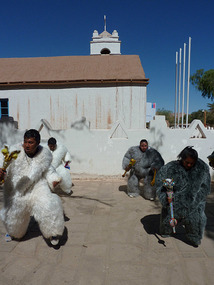





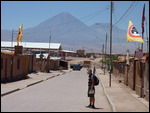
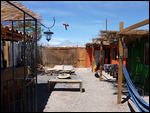
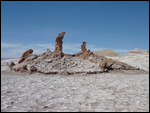
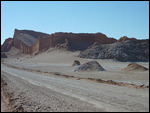

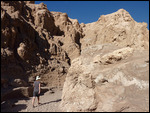
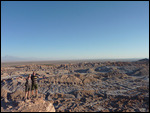
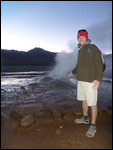
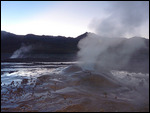
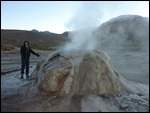
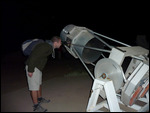
2025-05-23